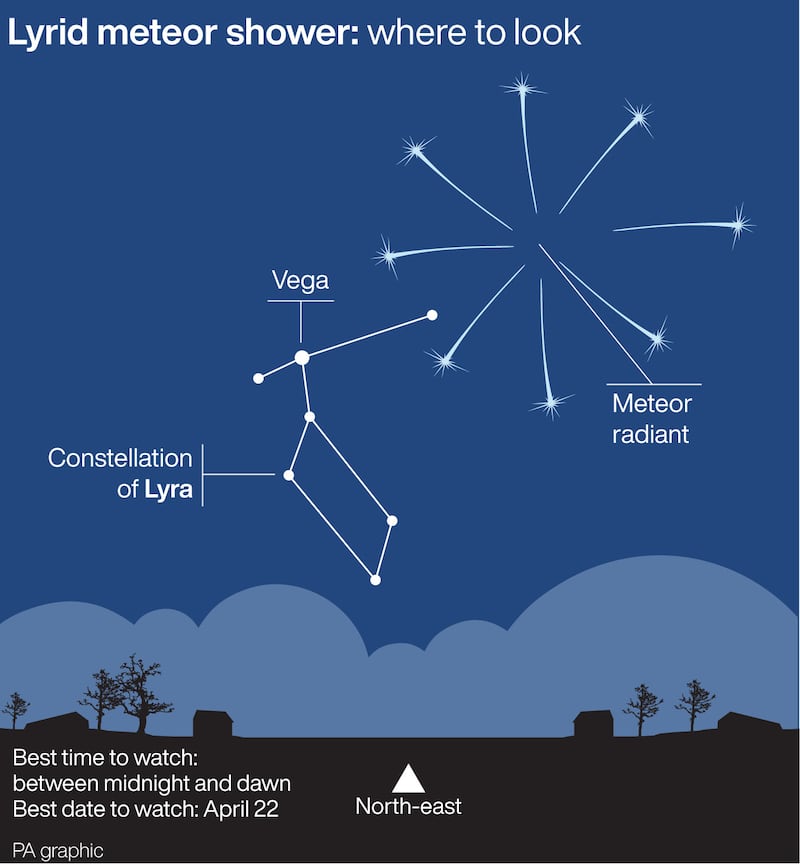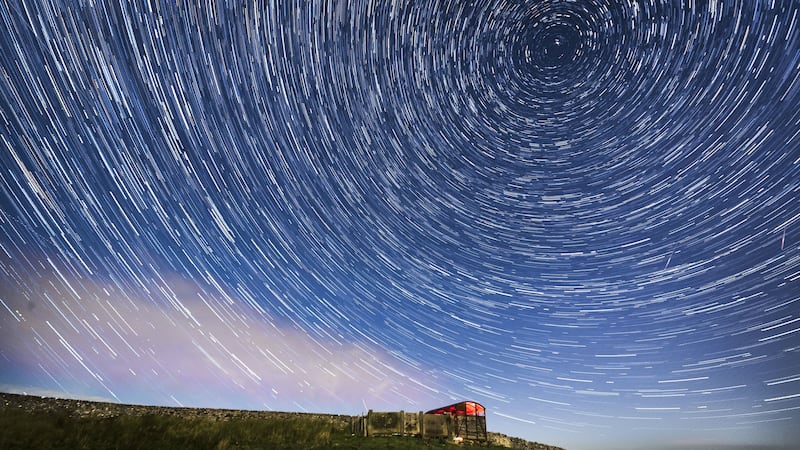Stargazers can look forward to catching the Lyrid meteor shower on Tuesday night, with up to 18 meteors expected to light up the night sky every hour.
The celestial display is expected to peak on the night of April 21 and will be visible until the early morning of April 22.
Meteor showers, or shooting stars, are caused when pieces of debris, known as meteorites, enter Earth’s atmosphere at speeds of around 43 miles per second, burning up and causing streaks of light.
The Lyrids takes its name from the constellation of Lyra the Harp, where the shooting stars appear to originate from.
The meteors are pieces of debris falling from the Thatcher Comet, which is expected to return to the inner solar system in 2276, after a 415-year orbital period.

Tania de Sales Marques, an astronomer at the Royal Observatory Greenwich, told the PA news agency: “Comets are basically dirty iceballs that heat up as the comet approaches the sun, releasing dust and gases into space, and if the Earth, as it moves along its orbit around the sun, encounters these clouds of dust, then we get a meteor shower.”
Ms de Sales Marques said the peak of the shower will happen on the night between the 21st and 22nd of April.
She told PA: “In order to see a meteor shower one must be somewhere shielded from city lights.
“The moon will be in its waning crescent phase which means that we will have a nice dark sky.
“We might see up to 18 meteors per hour and maybe even the occasional fireball.”
Those waiting to catch a glimpse of the meteors will also be able to spot Vega, which is Lyra’s brightest star.
Ms de Sales Marques added: “To observe the peak of the Lyrid meteor shower, we should look to the right of Vega once it has risen in the north-east direction after 8pm.
“However, we might get a better chance of spotting meteors later on at night.
“Vega will have moved across the sky towards the south and will also be higher up, making it easier to find it.”
The Lyrids occur between 16-25 April every year.








